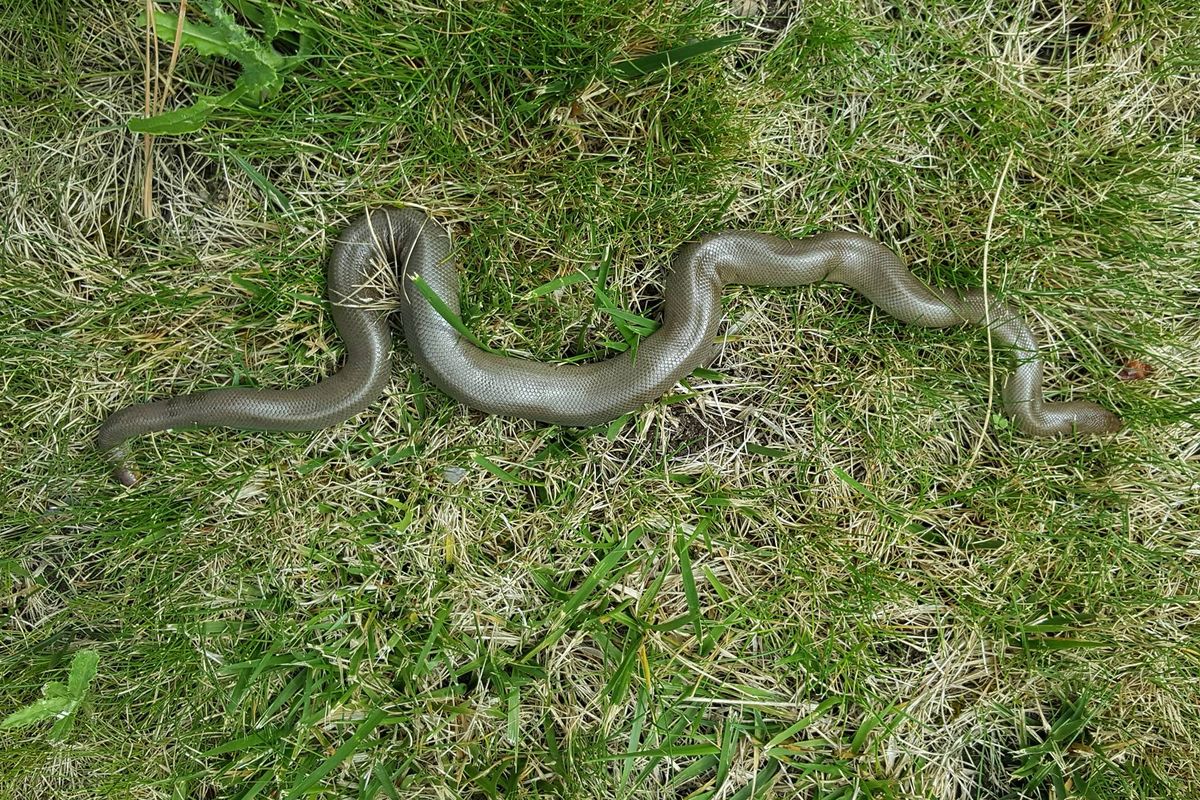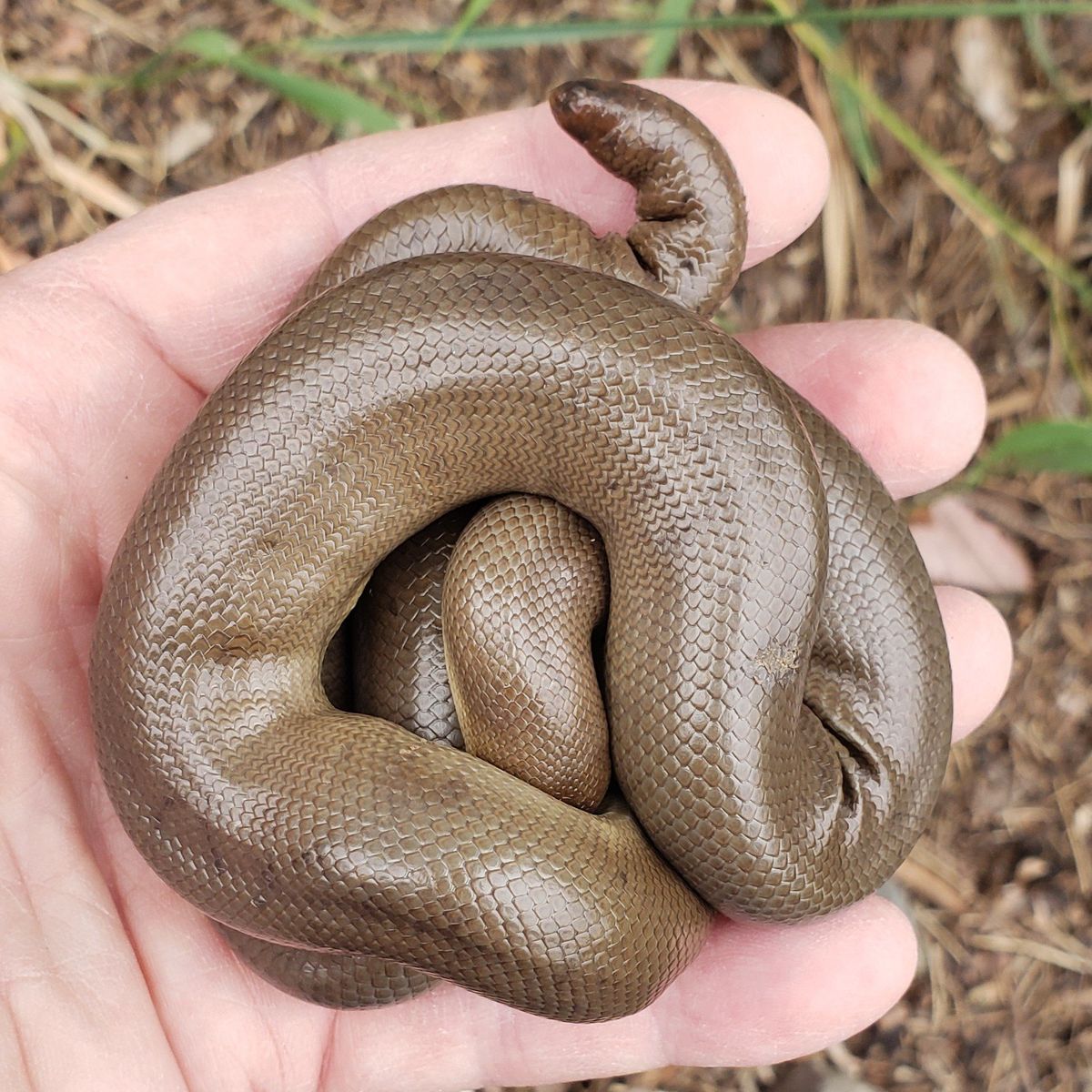Cool critters: A rubber boa slithers among us, slowly and secretively
An adult rubber boa slithers across the grass in Carl Barrentine’s back yard in Spokane. Despite being a constrictor, the snake is shy and no threat to humans. (Courtesy of Carl Barrentine)
Here in the Inland Northwest, a boa constrictor lurks under leaves, logs and inside rodent burrows.
That’s right, a boa species infamously known for squeezing its prey to death lives in parts of the Western United States, including Washington and Idaho.
“Northern rubber boas are found in all Washington ecoregions,” the Washington state Department of Fish and Wildlife states on its website.
But never fear. Unlike the boa constrictor as long as a limousine that lives in jungles and swallows monkeys, the northern rubber boa is the length of a skateboard and as docile as a guinea pig.
“They are absolutely harmless to humans,” said WDFW district wildlife biologist Scott Fitkin, adding that they don’t bite, squeeze or strike at people. Rubber boas have such calm demeanors that he brings them to hands-on presentations to teach kids and adults about the wonders of snakes.
“There are so many misconceptions about snakes that generate fear,” Fitkin said. “Introducing people to the rubber boa provides positive exposure to snakes and helps humans understand and appreciate them.”
The fact that a boa species lives in our region is odd enough. After all, rubber boas are related to pythons and anacondas. But the oddness doesn’t stop with its place of residence. Consider the reptile’s common name – a snake called rubber. That’s because the outer covering of the northern rubber boa resembles, well, rubber.
“They have small scales and the skin is loose on the body,” notes the Idaho Fish and Game website. “This gives them the look and feel and rubber.”
Typically, this so-called “rubber” is the color of creamy coffee; other times, it is uniformly olive or pinkish.
OK, so we’ve got a thick-bodied snake that’s roughly 2 feet long with rubbery skin the color of a coffee latte. On top of that, it slithers slowly. Certainly a northern rubber boa would catch our attention. Why, then, do we rarely see them?
They spend a lot of time underground and hunt mostly at night, according to Fitkin, eating young mammals such as mice and voles, along with salamanders and lizards. And yes, like other boa species, they kill their prey by constricting, he said.
One of the oddest things about the rubber boa is the bluff strategy it uses to get prey and defend itself from predators such as raccoons, coyotes, owls and bobcats. Because the snake has a blunt, thick tail that resembles its head, aggressors can’t distinguish which is which. When threatened, the boa coils into a ball and raises its tail, making striking motions as if it’s a head.
Then the tail “releases an incredibly foul-smelling musk,” to ward off the attacker, said snake expert Michael E. Dorcas in Reptiles Magazine.
Things get even weirder at mealtime. When going after young prey, the northern rubber boa will use its tail to strike at the mother rodent defending her nest in a burrow. Meanwhile, at the other end of the snake’s body, its real head is eating her babies.
“That’s why tails of the rubber boa often have scars and bite marks,” said Fitkin of the WDFW. “Remember, they’re slow, so they use clever tricks to survive.”

